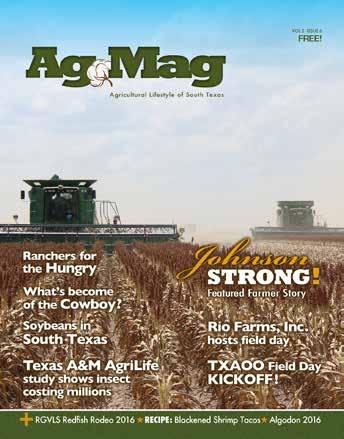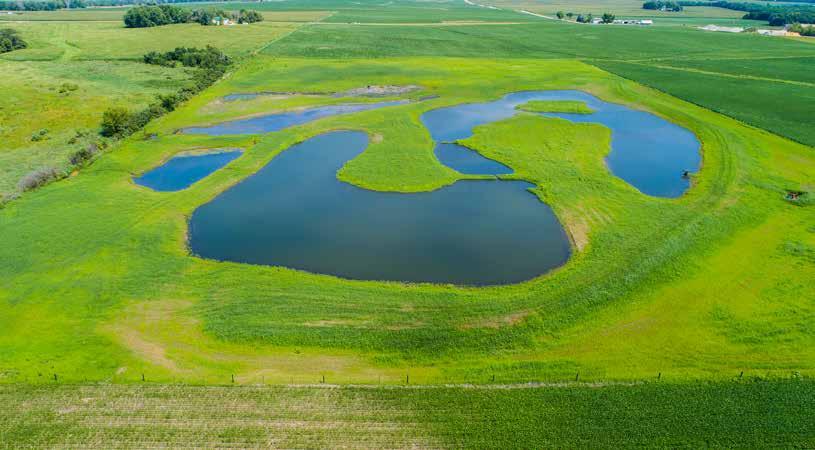
4 minute read
As 2020 Closes IOWA: Building Resilience Through
from issue 39 of Ag Mag
by THEAGMAG
Iowa: Building Resilience
Through Conservation PartnershipsBY KATE M. GIANNINI
Advertisement
IJack and his wife Marion live t is a sunny, breezy October day. The 2020 harvest is in full on a century farm (est. 1912), swing, with dust in the air and farm equipment slowing traffic on where they raise corn and the country roads in east-central Iowa. It has been an unprece dented year for farmers in Iowa, after record setting droughts soybeans, and use a variety of conservation practices in their operation, and an August derecho bringing hurricane speed winds dam- including no-till aged 850,000 acres of crops – an area so large, it can be and cover crops. seen from space! On this day, a small group of people joined the Middle Cedar Watershed Management Authority (WMA) virtual board meeting. Among the 40 callers is board member Jack Boyer, a fourth-generation farmer from Reinbeck, Iowa.
Photos: Jack & Marion Boyer, Cedar Rapids Flood, IWA Wetland, NC Group
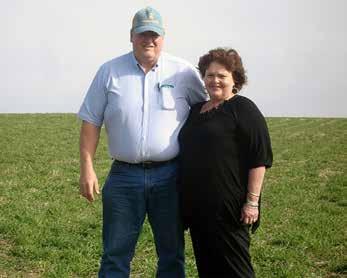
Jack wears many hats, but today he is representing the Tama County Soil and Water Conservation District on the Middle Cedar WMA board. On the meeting agenda is not only funding sustainability for their watershed, but also stakeholder engagement. “As we experience a changing climate with more intense rainfalls and longer periods of drought, farmers are adapting and modifying their operations,” comments Jack.

Jack’s commitment to conservation does not go unnoticed by his peers. Most notably, Jack was named the Field to Market 2020 Farmer of the Year. He shares his on-farm research and expertise broadly through his work as a member of several agriculture– and conservation–focused boards.
“This is part of my way to give back and continue my family’s legacy,” he says. Jack’s expertise and leadership make a significant contribution to the Middle Cedar WMA board, which is focused on partner collaborations and stakeholder engagement to reduce flooding and improve water quality in the Cedar River basin.
In 2010, Iowa lawmakers passed legislation authorizing the creation of watershed management authorities. A WMA brings together cities, counties, soil and water conservation districts, and stakeholders to cooperatively engage in watershed planning and management. The Middle Cedar Watershed covers about 1.5 million acres in east central Iowa and spans 10 counties. Nearly 75% of the watershed consists of agricultural lands, with many small towns and three large metro areas. Downstream is Cedar Rapids, which suffered devastating floods in 2008 and again in 2016. 2008 Cedar Rapids Flood million in funding. The Middle Cedar Watershed was allocated The Iowa Flood Center at the University of Iowa provided the vision for the IWA. This five-year program will sunset in December 2021. The IWA is active in nine watersheds across the state and has six specific goals:
• Reduce flood risk; • Improve water quality; • Increase community flood resilience; • Engage stakeholders through collaboration, outreach, and education; • Improve quality of life and health for Iowans, especially for vulnerable populations; and • Develop a program that is scalable and replicable throughout the Midwest and United States.
The program represents a vision for Iowa’s future that voluntarily engages stakeholders throughout the watershed to achieve common goals that lead to increased resiliency to natural disasters and to the overall improvement of public health in Iowa.
The Iowa Flood Center (IFC) provides Iowans with the latest technology and resources to better monitor and prepare for flood events. When the Iowa Legislature created the center in 2009, Iowa became a national leader in flood prediction and mitigation. The IFC’s tools and resources are an essential component of the IWA. The IFC’s development of the watershed model GHOST (Generic Hydrologic Overland-Subsurface Toolkit) is used to evaluate the flood reduction benefits expected from the implementation of nature-based mitiga-
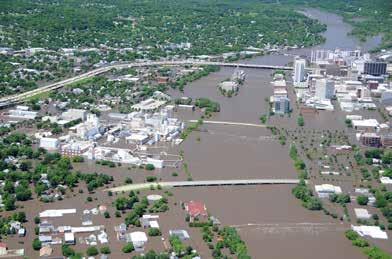
tion strategies and includes climate change scenarios. In 2019 and 2020, delegations from North Carolina and Texas traveled to Iowa to learn about the state’s efforts to become more flood-resilient. Faced with their own challenges from Hurricane Harvey, Florence, and many more, these groups represent state and federal personnel, farmers, academic representatives, and conservation professionals all looking to Iowa for expertise in flood

The Middle Cedar WMA formed after Iowa received a $97 million Among the Texas group was Jerry Cotter, the chief of water resourcgrant from U.S. Housing and Urban Development for the Iowa Wa- es for the U.S. Army Corps of Engineers in Fort Worth. “We don’t tershed Approach. The Iowa Watershed Approach (IWA) is a want to reinvent the wheel – we want to learn from what Iowa has collaboration of many statewide organizations and agencies. The accomplished and bring some of that technology to Texas,” said IWA supports construction of flood mitigation projects with $30 Cotter. risk tools, resources, and partner collaborations. nearly $12 million, and to date has already constructed nearly 70 Iowans can feel proud of what they have accomplished when it wetlands, ponds, and other conservation practices, with another 30 comes to flood risk management, but we still have a long ways to coming by the end of 2021. go. Farmers like Jack Boyer set an example for how to create more resilient watersheds. IowaIWA Wetland - photo by: Iowa Flood Center

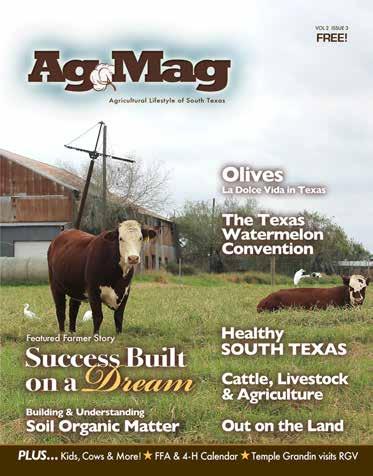
Want to ?Advertise
